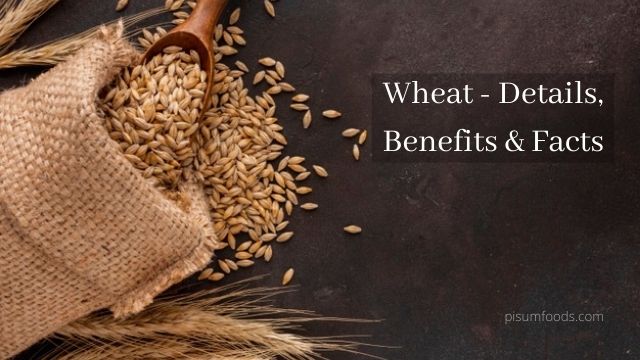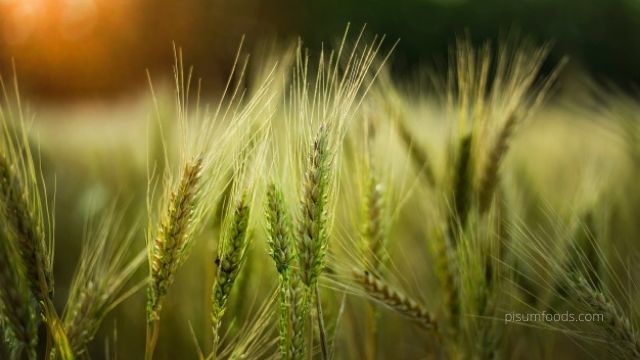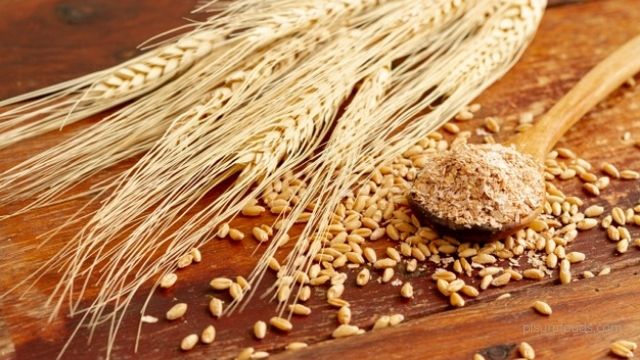 Translate
Translate Translate
TranslateWhether it’s bread for sandwiches or flour for noodles, the main ingredient involved in their production processes is wheat. Wheat is the most widely cultivated staple crop all over the world. It is one of the oldest and most important crops and has thousands of varieties known and grown worldwide. Wheat is grown on a land area more than any other food crop worldwide. It was one of the first crops in the world which could be easily cultivated on a large scale and the seeds were able to be stored for long periods in a dry climate.

Due to increasing global demand which is based on the ability to make unique food products and sudden changes of westernization of diet and industrialization processes, the consumption of wheat is growing day by day. After the processing of wheat gets over in the flour mills or any other industry, the flour is recovered from the milled grains it’s stored and wheat flour can be stored for a longer duration of time, while the remaining by-products can be used for livestock feeds. It is also used in the production of bioplastics, adhesives, paper, shampoos and conditioners, and other products.
The wheat flour industry has many different product types which mainly includes all-purpose, semolina, whole-wheat, fine wheat and bread. The most famous flour products amongst these are all-purpose and whole-wheat.
Based on the usage of the product and the end-users, the whole market has been segregated into various uses like food use, feed use and biofuel use.
Wheat currently resembles one of the widely popular and well-known food ingredients used all over the globe. It acts as a major ingredient in several bakeries and famous food products like bread, flours, biscuits, pasta, cakes, noodles, semolina, muffins, doughnuts, pizza and breakfast cereals. Drastic growth in the demand for these items has resulted in an escalation in the overall sales of wheat flour across the world. The prices of wheat flours are inexpensive as compared to the flour made from other grains. This makes it easily available to consumers belonging to different economic groups in society.
Without wheat, famous brands like DOMINOS(whose dishes are the most favourite for all generations of society), PIZZA HUT, SUBWAY, MAGGI noodles (a delicacy for kids and younger generations since decades) and pasta by Nestle, the all-time famous mouth-watering biscuits of PARLE(Monaco, Krackjack, Hide & Seek, Parle-G), Britannia (Good day, Marie Gold, 50-50), Oreo, Sunfeast or the Horlicks biscuits have not been in existence. These items also act as a lifesaver in moments of emergency or when one is away from his/her home. Thinking of this only, the world seems difficult without wheat as it plays an important part in the framing of our past and present memories.

The wheat market has been categorized on the basis of various channels of distribution like supermarkets and hypermarkets, independent retailers, convenience stores, speciality stores and online. Supermarkets and hypermarkets are the most popular channels used for obtaining the desired wheat flour as they offer a wide variety and varied range of brands and products.
Wheat has many properties and also acts as an important source of carbohydrates along with some protein and vitamin content. It is being advised and recommended by doctors and health experts to consume it on a regular basis through some of the other forms. It also contains phytochemicals and fibres essential for the overall well-being of the individuals. It helps in lowering cholesterol levels thereby improving overall metabolism of the system. Reducing obesity and regulating the blood sugar level are some other benefits of the wheat flour.
Here are some interesting facts about wheat: - (According to aghires.com and wheatworld.org)-Wheat crop originated from the middle east and has been cultivated for thousands of years. The crop was first planted as a hobby crop in 1777. It was a key factor responsible for city-based societies at the beginning of civilization.
It is grown in every continent of the world up to some extent except Antarctica. It is the most harvested crop in the world. Spring season wheat and winter season wheat are the two seasonal categories of the crop. Spring wheat is being planted during the spring season and is harvested during the summer season and wheat that is planted during the fall-winter is harvested during the spring season. There are more than 600 pasta shapes (made from wheat flour) produced all over the world.
World trade in wheat is a lot higher than any other crops combined. Factors like increasing world population, disposable incomes of people, a sudden rise in the consumption of fast food and bakery products have further added to the worldwide demand of the product. People are earning in huge amounts using wheat as their product. Major food companies of the world are already earning in millions and billions.

In India, wheat is the second most important food crop both in terms of area as well as production. Once upon a time in the 1960s, India was facing a perpetual food-deficit situation wherein it wasn’t able to produce sufficient food crops to feed the growing population. With the advent of modern technology in the field of agriculture and the Green revolution started by the government authorities, the overall wheat production made remarkable progress in making India a self-sufficient country in terms of food grains.
According to a recent article published by economictimes.indiatimes.com, the government of India has increased its wheat procurement this year and has touched a massive record of 38.98 million tonnes. There are many states which act as major wheat suppliers in India. Madhya Pradesh became the country’s biggest wheat procuring state. Earlier Punjab used to be at the topmost position in terms of wheat production. Still, Punjab, Uttar Pradesh and Rajasthan made a significant contribution in reaching the wheat procurement target this year. Now in the present-day scenario, more and more states are participating in increasing the production and are achieving new records.
The government is also providing many types of subsidies and is launching new reforms day by day in order to encourage the farmers. The government’s crop procurement godowns get filled in no time with the increase in production year by year. Now the one thing that is lacking behind is the effective distribution of the procured food crop to every household. Also, the government should consider revising the reforms and the policies being made for the export of agriculture products.
The overall process should become easy and convenient and should benefit the farmers at its maximum. Currently, the system is corrupt and a lot of loopholes exist in the present system. If India becomes capable enough in exporting the surplus quantities of wheat smoothly in the international market then it will reach newer heights. Boost in the economy of India could easily be detected once this measure is initiated.
Once the production starts reaching to all parts of the world, the country would be benefited in various segments, the wheat export from India would reach new heights and when the prices of the exports get favourable our agriculture market would be recognised as one of the greatest markets all over the world.
Pisum Foods is one of the leading Wheat importers from India. We understand that the export of Wheat from India can be somewhat complicated at times. Thus, Pisum is here to help! Our executives at Pisum Foods are trained to support you at every step on the way, right from documentation to the final delivery of the products. Our global connections and in-depth knowledge of the market has proven to be beneficial to most of our past clients. If you are looking for Wheat export from India, Contact Pisum now!